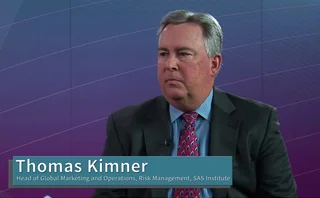
Progress made on equity derivatives backlogs
Investment banks have continued to make progress with reducing confirmation backlogs associated with executing over-the-counter equity derivatives trades. The average backlog has been reduced to nine days, down from 19 days in November 2006, according to the UK Financial Services Authority.
Stephen Bland, director of wholesale firms at the FSA in London, outlines one of the important reasons why banks have been addressing this issue.
“The main benefit of reducing equity derivatives confirmation backlogs is to increase certainty about financial firms' positions so they can be more confident of what trades they have on their books in the event of a stressed market situation, such as a crash,” he said.
Attention turned to the OTC equity derivatives confirmation backlogs in November 2006, when 17 of the largest dealers set out a list of targets for improving the situation in a letter to the Federal Reserve Bank of New York. This included plans to create more standardised documentation to reduce the paperwork involved with processing transactions and using electronic platforms to increase the speed of confirming trades. Since then the group of banks has expanded to include an eighteenth member and they have set new targets periodically.
In a statement on October 24, the New York Fed noted that the 18 large banks that had set targets in May 2007 had achieved them by October. This involved processing 70% of inter-dealer trades electronically and reducing confirmation backlogs by 55% by September 30 of the same year.
“Confirmations work-in-hand associated with OTC equity derivatives is currently a major priority for banks to address. Backlogs are under control and will continue to decrease as more is done in this area,” said Katherine Darras, general counsel, Americas, at the International Swaps and Derivative Association in New York.
The most recent targets for reducing backlogs were set last October. These include: negotiating and publishing, in consultation with Isda, six new buy-side master confirmation agreements (MCAs) for equity derivatives products by August 31, 2008; executing new and existing MCAs with high-volume clients; and electronically processing at least 50% of eligible trades with dealers’ top 20 clients by March 31, 2008.
“The MCAs help the efficiency of executing and confirming equity derivatives trades by providing a standard template for a trade. However, some sections of the templates are left to be negotiated with the counterparty,” adds Darras.
These targets make steps towards the industry’s long-term targets of confirmation by T+5 business days for electronically processed trades and by T+30 for the more bespoke transactions relying on long-form, paper-based confirmations.
Despite the progress made with updating their operations departments, reducing equity derivatives confirmation backlogs and hitting those important targets, those involved in the financial services industry cannot rest on their laurels.
“Regulators will continue to monitor OTC derivatives processing closely and work with the financial industry until there is a post-trade infrastructure that is efficient, scalable and manages operational risk effectively,” says Theo Lubke, senior vice-president in the operation risk division at the New York Fed.
See also:
FSA's Tiner warns against complacency
Putting backlogs up front
Only users who have a paid subscription or are part of a corporate subscription are able to print or copy content.
To access these options, along with all other subscription benefits, please contact info@risk.net or view our subscription options here: http://subscriptions.risk.net/subscribe
You are currently unable to print this content. Please contact info@risk.net to find out more.
You are currently unable to copy this content. Please contact info@risk.net to find out more.
Copyright Infopro Digital Limited. All rights reserved.
As outlined in our terms and conditions, https://www.infopro-digital.com/terms-and-conditions/subscriptions/ (point 2.4), printing is limited to a single copy.
If you would like to purchase additional rights please email info@risk.net
Copyright Infopro Digital Limited. All rights reserved.
You may share this content using our article tools. As outlined in our terms and conditions, https://www.infopro-digital.com/terms-and-conditions/subscriptions/ (clause 2.4), an Authorised User may only make one copy of the materials for their own personal use. You must also comply with the restrictions in clause 2.5.
If you would like to purchase additional rights please email info@risk.net
More on Infrastructure
Communications surveillance solutions 2024: market update
A report offering Chartis’ latest view of the vendor landscape for communications surveillance solutions
SIMONE, the AI that nearly took down a bank
An algorithm designed to create new structured products ran out of control last year with almost catastrophic consequences for a major bank, as our exclusive whistleblower account reveals
Revealed: where banks are (literally) warehousing their swaps
As derivatives notional grows, dealers experiment with novel storage solutions
E-trading takes hold for FX swaps – sort of
Bulk of trades are being executed over screen, but bolder changes have stalled
From DNA to DHA – Preparing for a new era of digital human augmentation
As technology increasingly permeates societies, cultures and everyday activities, its integration into people’s lives is having a profound impact on what is expected of people in the workplace. Deloitte examines this evolution of today’s workforce, the…
Risk and finance: Working more closely together
Video interview: Thomas Kimner, SAS
Video interview: Fabio Merlino, Intesa Sanpaolo
Fabio Merlino, head of retail and insurance risk discusses how the wealth management division of Intesa Sanpaolo upgraded its risk analytics capabilities with the algo system used by its proprietary traders
The changing face of Risk.net and our magazines
Extensive reader consultation has helped us reshape editorial teams and our site







